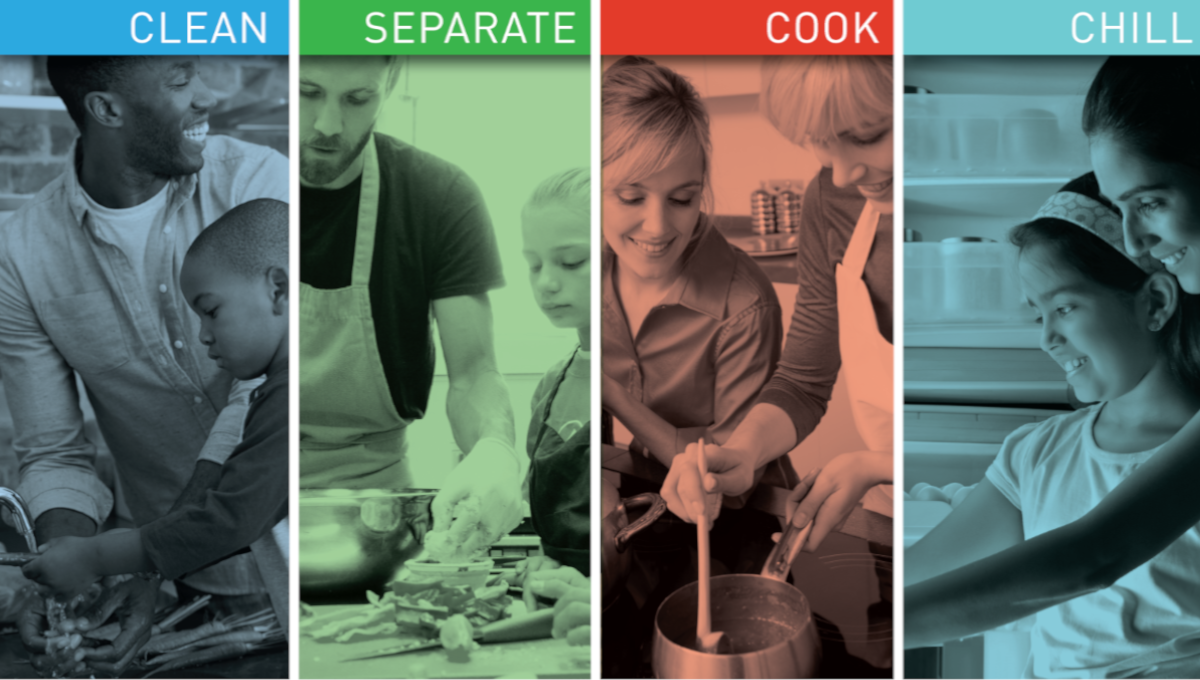For 24 years National Food Safety Education Month has provided 30 days for health educators at the national, state, and local levels to focus attention on the fundamentals of buying, storing, preparing, and serving food as safely as possible.
While the United States has one of the safest food supplies in the world, every year an estimated one in six Americans gets a foodborne illness (also called food poisoning), but you can help protect yourself and your family by using the basic principles of food safety.
The Food and Drug Administration offers Food Safety Education Month resources all year round for consumers and educators on a variety of subjects, including learning who is most at risk for foodborne illnesses and how to avoid food waste while maintaining food safety.
The centerpiece of these resources is advice on safe food handling. This year, FDA’s program is refocusing on the four basic messages of food safety at home:
Clean
- Wash your hands with warm water and soap for at least 20 seconds before and after handling food.
- Rinse fresh fruits and vegetables under running tap water, including those with skins and rinds that are not eaten. Scrub firm produce with a clean produce brush.
- Wash your cutting boards, dishes, cooking tools, and countertops with hot soapy water after preparing each food item.
Separate, Don’t Cross-contaminate
- Raw meat, poultry, eggs, seafood, and flour should not come in contact with foods that do not need to be cooked before eating. Keep them separate while shopping, storing, and cooking.
- Use one set of cooking tools for raw meat, poultry, eggs, seafood, and flour, another set for foods that are already cooked or will not be cooked.
- Don’t reuse marinades used on raw foods unless you bring them to a boil first.
- Don’t cross-contaminate by washing raw poultry or meat. It can spread germs around the kitchen which may transfer to food.
Cook
- Make sure food is cooked to a safe internal temperature by checking with a food thermometer before you eat it. A safe internal temperature is important protection against germs in or on most cooked foods.
- Follow package directions on baking mixes and other flour-containing products for correct cooking temperatures and specified times.
Chill
- Refrigerate or freeze meat, poultry, eggs, seafood, and other perishables within two hours of purchasing. Refrigerate within one hour if the temperature is above 90 degrees F. This two-hour rule also applies to serving prepared cold or hot food on a picnic or buffet style party, because the longer food sits at room temperature, the more bacteria multiply.
- Never thaw food at room temperature, such as on the countertop. There are three safe ways to defrost food: in the refrigerator, in cold water (change water every half hour to make sure it stays cold) and in the microwave. Food thawed in cold water or in the microwave should be cooked immediately.
- Divide large amounts of leftovers into shallow containers for quicker cooling in the refrigerator.
Additional Information
(To sign up for a free subscription to Food Safety News, click here.)

